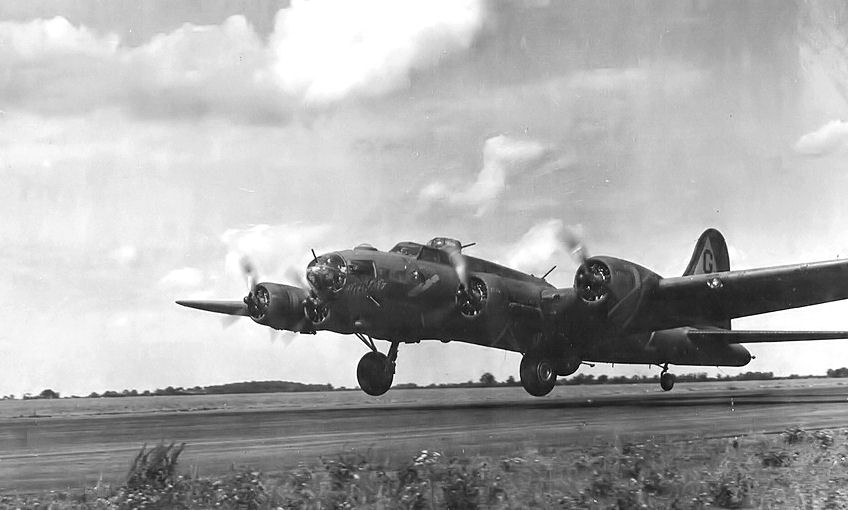DECEMBER 2, 2021 – Before getting down to business recently, a client and I chit-chatted about movies and TV shows/series we’d watched lately. My client had landed, as it were, on old episodes of the TV show, Twelve O’Clock High, a take-off of the 1949 movie starring Gregory Peck. My client said it was his favorite TV show back in the 1960s. Though my family didn’t have a TV, I’d caught a few episodes at a friend’s house.
Twelve O’Clock High was my introduction to the B-17 or “Flying Fortress.” I tuned in quickly to the flying scenes (all taken from footage of actual army air corps film). The story line, acting, and directing, however, made a lesser impression.
When I mentioned the B-17 to my mother—a wartime aeronautical engineer—she informed me that her favorite cousin, the extended family’s crown prince, who’d taught Mother how to swim (he was later captain of the Dartmouth swim team), sail a boat, paddle a kayak, and run an outboard motor, died aboard a B-17 that crashed into the English Channel. The loss was devastating.
Since the 1960s, I’ve read much about the famous American bomber and even boarded one on display among a collection of vintage WW II aircraft at a local general aviation airport. One of my all-time favorite war movies is Memphis Belle, which, of course, stars . . . a B-17.
After dispensing with the matter my client had called about, I checked out Twelve O’Clock High on YouTube and found the series available—free and free of advertisements. That evening, I binged-watched several episodes, then the full-length movie.
Now that I’m old enough to notice the finer elements of film-making, I’m impressed by Twelve O’Clock High—the movie and the TV spin-off, which substituted Robert Lansing for Gregory Peck in the role of uncompromisingly strict and disciplined—yet fair—base commander.
I don’t particularly appreciate “war zone” movies that over-indulge in gratuitous explosions and machine-gun-fire that kill bad guys over good guys at a ratio of 20 to one, built on a simplistic plot involving American convicts granted commutation of sentencing in exchange for volunteering for suicide military missions.
Twelve O’Clock High isn’t your classic “war zone” theater. All the characters are credible and of integrity, though a recurring theme is self-doubt—unusually realistic for war films. Although the pressure to fight and win the war is omnipresent, 100% of the direct tension in the storyline is among the American airmen. Actual combat takes a small percentage of film-time, and the “enemy” (German fighter pilots) play a faceless, anonymous role on which judgment isn’t imposed. As props, coffee pots, cigarettes and lighters, and occasional shot glasses and beer mugs occur far more frequently than any kind of weaponry of war.
Both the movie and the TV series provide good treatment of the human condition when the outcome of the underlying fight is in doubt. And for extra-credit, the vintage-aircraft buff is afforded fine views—inside and out—of the miraculous, American workhorse of WW II—the B-17.
(Remember to subscribe to this blog and receive notifications of new posts by email.)
© 2021 by Eric Nilsson
